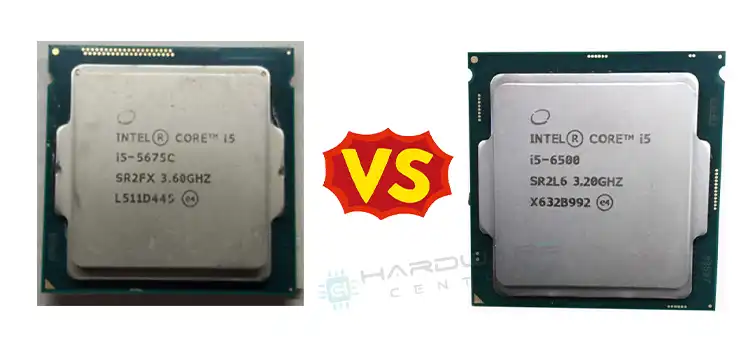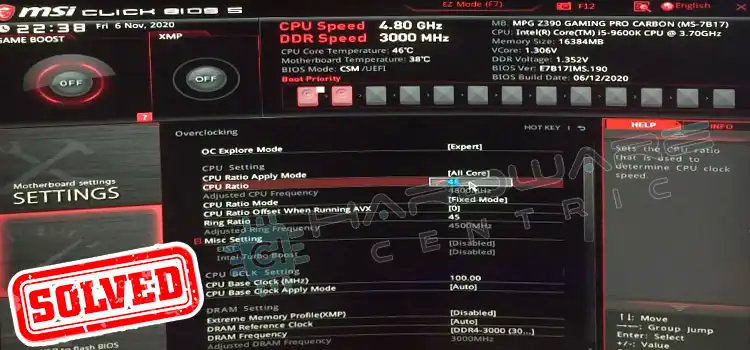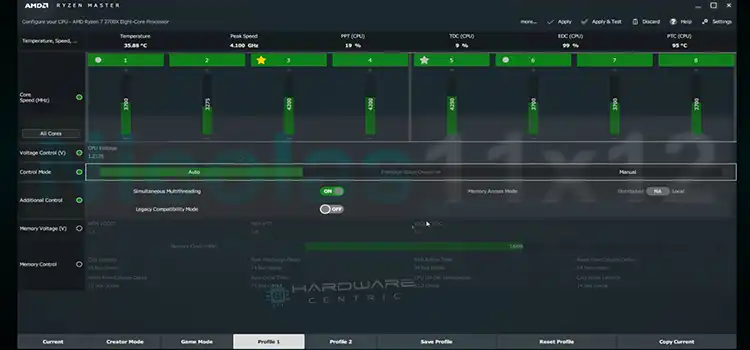Intel 5th Gen i5 vs 6th Gen i5 Processor | Difference Between Them
The Intel Core i5 series is a well-liked alternative when selecting a computer CPU. Between the fifth and sixth generations, how do you decide? Although both function well, there are several key differences to be aware of. The sixth generation consumes less power with a faster CPU speed and greater graphics performance.
The 5th generation may be less expensive while still being able to accomplish simple tasks easily. It depends on your demands and spending capacity. The fifth generation can be sufficient if you’re a casual user or only require a basic computer. But if you need better performance or are a power user, the 6th generation is the way to go.

The Comparison of Intel Core i5 5th and 6th Generations
For computer users seeking a high-performance and reliable central processing unit (CPU), the Intel i5 5th and 6th-generation processors are popular choices. Despite the superb performance and features offered by both generations of i5 processors, a few significant distinctions must be taken into account. The performance, clock speed, processor cores, graphics capabilities, memory speed, connectivity, Intel technologies, energy efficiency, and price of the 5th Gen and 6th Gen i5 are examined in this article.
1. Performance
Clock speed, core count, and overall processing power can be used to compare the performance of the 5th and 6th generation Intel i5 processors. Due to its greater clock speed and additional cores, the 6th Generation i5 is generally faster and more potent than the 5th Generation i5.
The 6th Gen i5 is better suited for demanding jobs like video editing, 3D modeling, and gaming since it has more cores and a faster clock speed than the 5th Gen i5. However, the precise i5 model will determine the exact performance differences between the two generations.
2. Clock Speed
The CPU’s clock speed estimates how many clock cycles it can complete in a second. The 6th Generation i5 can process more data faster than the 5th Generation i5 since it runs at a faster clock speed. In demanding tasks that demand a lot of processing power, the 6th Gen i5 is a superior option because of this.
3. Cores
A computing system’s number of CPU cores determines how many tasks it can perform simultaneously. The 6th Generation i5 has more cores than the 5th Generation i5, boosting the number of simultaneous tasks it can handle. The 6th Gen i5 is a better alternative for individuals who demand the capacity to run multiple apps at once.
4. Graphics Capabilities
It is possible to compare the performance of integrated graphics processors (GPUs) and total graphics on Intel Core i5 CPUs of the fifth and sixth generations. The 6th Generation i5 is a better option for applications that require many graphics because of its enhanced graphics capabilities and higher memory speeds. Customers who don’t need the newest graphics capabilities may still manage with a 5th Generation i5.
5. Memory Speed
The CPU’s ability to access and process data stored in memory is measured by memory speed. Faster memory speeds mean that the 6th Generation i5 can access and process data stored in memory more quickly than the 5th generation i5. As a result, people seeking rapid and responsive performance ought to select the 6th Gen i5.
6. Connectivity
It is possible to compare the supported connectivity technologies and overall connectivity performance between the 5th Generation i5 and the 6th Generation i5. With Thunderbolt 3 and USB 3.1, the 6th Generation i5 provides consumers with a more seamless and fast experience. The 5th Generation i5 supports older connection standards.
7. Intel Technologies
Comparisons between the fifth and sixth generations of Intel i5 CPU technology are available. The sixth Generation i5 features the newest and best from Intel, including Intel Turbo Boost 2.0 and Intel Hyper-Threading. With the aid of these technologies, multi-threaded programs can operate more quickly and smoothly. The fifth Generation i5 employs less recent Intel components, which might need to be more sophisticated.
8. Energy Efficiency
There are several significant variations to consider between the energy efficiency of the 5th and 6th Generation Intel i5 CPUs. Particularly, compared to the i5, the 6th Generation tends to be more energy-efficient. And this is due to its reduced power consumption and enhanced capacity for heat dissipation. The 6th Generation i5 will be a more energy-efficient and economical solution for users as a result of using less energy and producing less heat.
9. Cost
Depending on the model you’re interested in, and where you want to buy it, the cost of 5th and 6th Generation i5 laptops might vary significantly. A 6th Generation i5 laptop will often cost more due to its better performance and energy efficiency. The precise i5 model you’re looking at, and the retailer’s pricing policies will determine the actual price difference between the two generations.
Here is a Comparison Table Between the 5th Generation i5 And 6th Generation i5:
| Feature | 5th Generation Intel Core i5 | 6th Generation Intel Core i5 |
| Architecture | Haswell | Skylake |
| Process Technology | 22nm | 14nm |
| CPU Cores | 4 | 4 |
| Threads | 4 | 4 |
| Base Clock Speed | 2.7 GHz to 3.5 GHz | 2.3 GHz to 3.6 GHz |
| Max Turbo Frequency | 3.7 GHz to 3.9 GHz | 3.5 GHz to 4.0 GHz |
| Cache | 3 MB to 6 MB | 3 MB to 8 MB |
| TDP | 35 W to 91 W | 35 W to 91 W |
| Integrated Graphics | Intel HD 4600 / 5000 | Intel HD 530 / 550 |
| Max Graphics Frequency | 1.25 GHz to 1.4 GHz | 1.05 GHz to 1.15 GHz |
| Memory Support | DDR3 / DDR4 | DDR4 |
| PCIe Lanes | 16 | 20 |
| Max Memory Bandwidth | 25.6 GB/s | 34.1 GB/s |
| Instruction Set | AVX2 | AVX2 |
Important Note: The information in the table highlights the difference between the 6th Generation i5 and the 5th Generation i5. The 6th Generation offers a considerable improvement in speed, power, and graphics capabilities, as well as support for faster memory speeds and the latest connectivity options. However, these advancements come with a higher price tag, making the 6th Generation i5 laptops more expensive than the 5th Generation i5 laptops.
Frequently Asked Questions And Answers
Which is Better for Gaming, the 5th Gen i5 or the 6th Gen i5?
When it comes to gaming, the 6th Generation i5 typically has an advantage because of its improved visuals and overall speed. Nevertheless, depending on the model and the games you’re playing, the real boost in gaming performance may change. It’s crucial to thoroughly consider how the features of the particular model you’re considering line up with your gaming requirements.
Is The 6th Gen i5 More Expensive Than the 5th Gen i5?
Yes, the 6th Gen i5 is generally more expensive than the 5th Gen i5 due to its improved performance and energy efficiency. However, the actual cost difference will depend on the specific model and retailer.
Can a 6th Gen i5 be used in a 5th Gen i5 computer?
It is possible to use a 6th Gen i5 in a computer with a 5th Gen i5, but upgrades to the motherboard and other components may be necessary. Consult a professional for assistance.
Conclusion
A 6th Generation i5 is better for customers seeking improved performance, energy efficiency, and Intel’s most recent technology. For those seeking a more cost-effective choice, the 5th Generation i5 is still a fantastic substitute that provides adequate performance and functionality. The choice between the 5th and 6th Gen i5 devices will ultimately depend on the user’s particular needs and available budget.
Subscribe to our newsletter
& plug into
the world of PC Hardwares
![[ANSWERED] Do I Need Thermal Paste for Ryzen 5 3600?](https://www.hardwarecentric.com/wp-content/uploads/2023/08/Do-I-Need-Thermal-Paste-for-Ryzen-5-3600.webp)




![[Fix] 100 CPU Usage While Playing Video (100% Working)](https://www.hardwarecentric.com/wp-content/uploads/2021/10/100-CPU-usage-while-playing-video.jpg)
